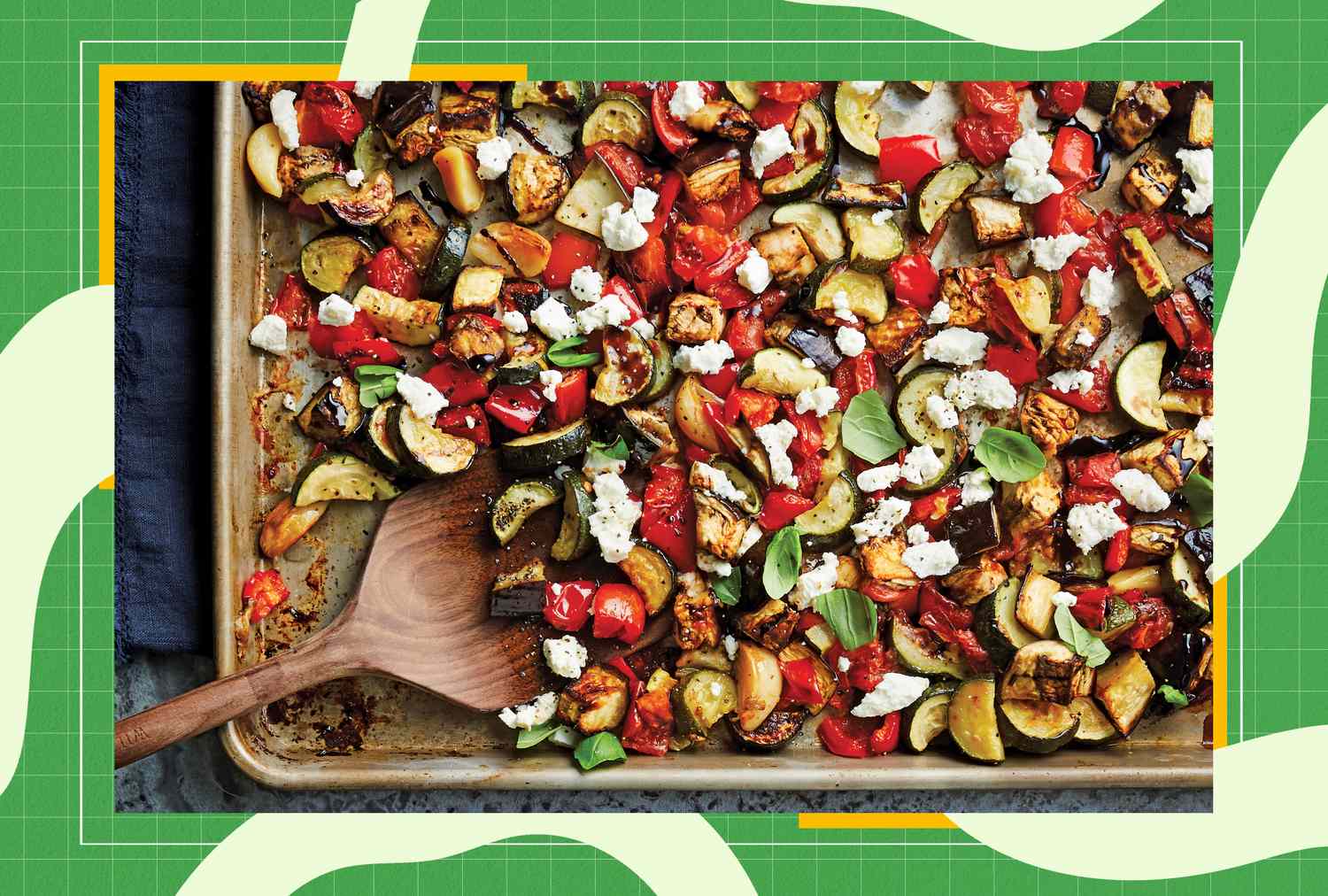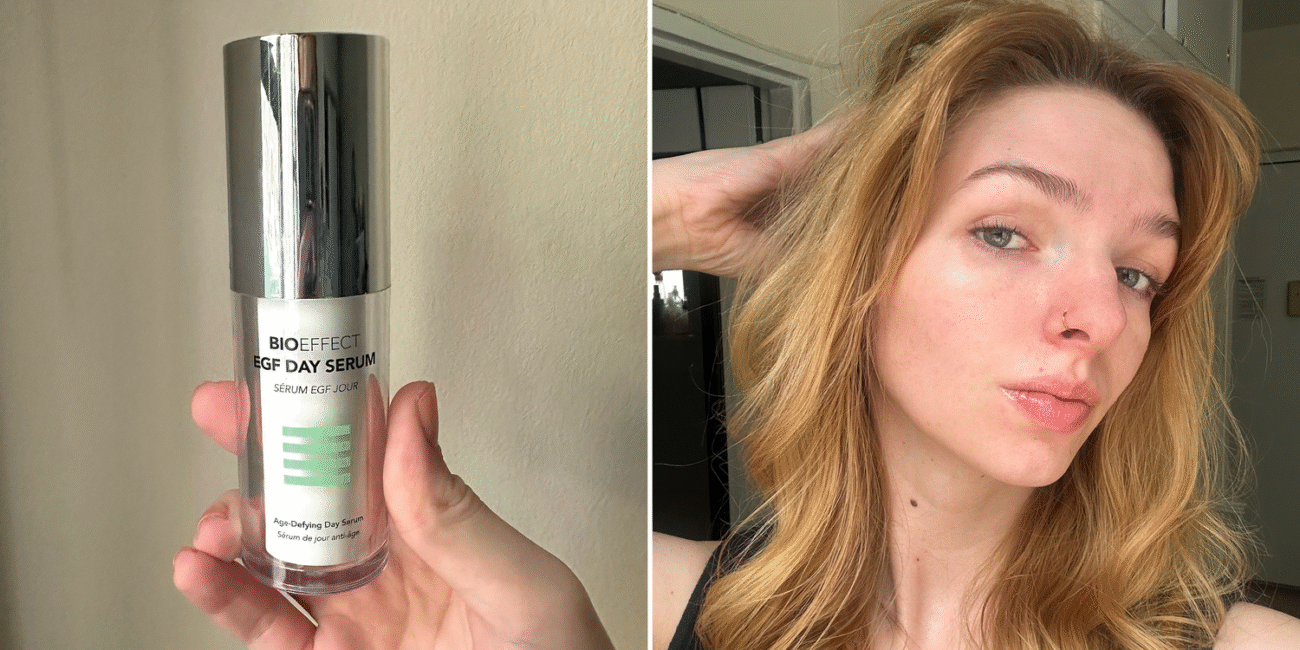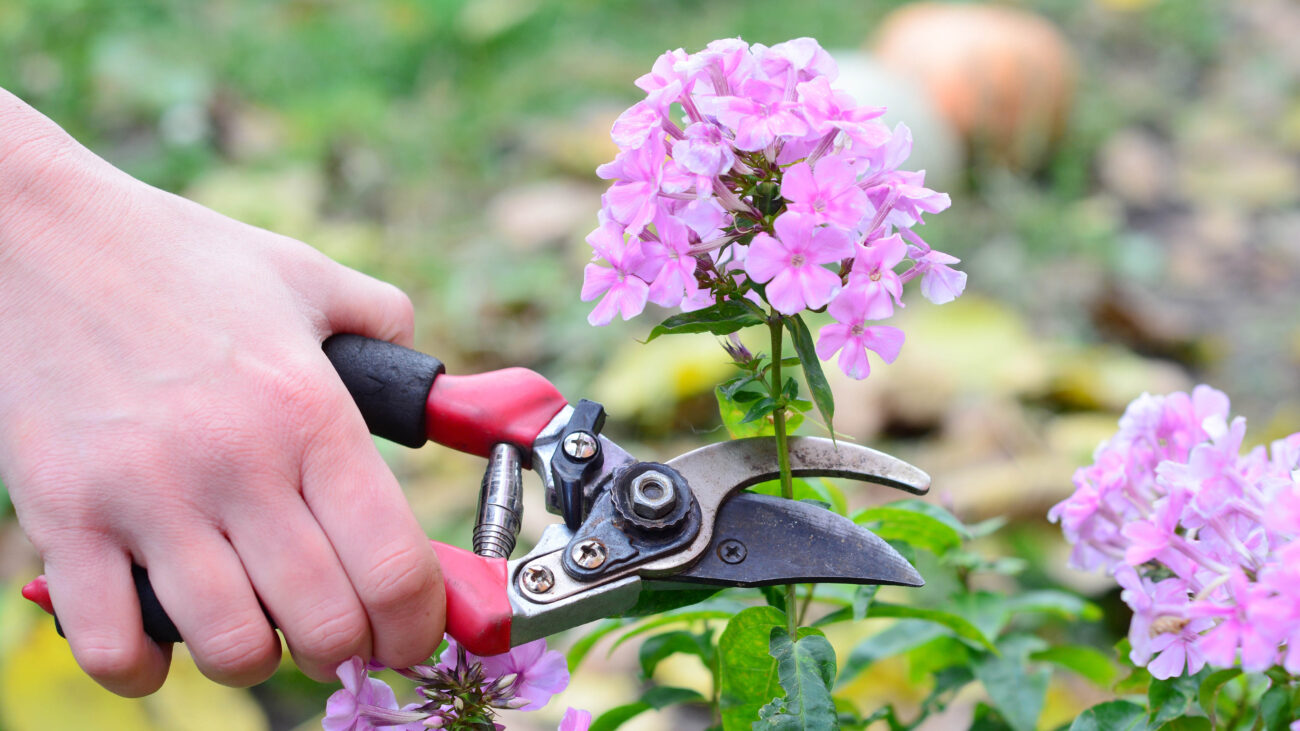Blog
Roasted Summer Vegetables Are a Meal-Prep Hero

- Roasting a pan of veggies every week gives you easy, ready-to-eat ingredients for fast, healthy meals all week.
- It’s a simple way to use up fresh produce before it goes bad.
- You can add roasted veggies to eggs, pasta, grain bowls, sandwiches, salads and more.
During the summer, the idea of turning on the oven to cook anything can be off-putting. But I still do it at least once a week to roast a big batch of summer vegetables. The hour of oven time is so worth it when I’m quickly scooping up a serving of ready-to-eat veggies to add to my breakfast, lunch or dinner. In addition to preparing you for the week, roasting a pan of veggies is a great way to help avoid food waste. Plus, having roasted vegetables at the ready can help you meet your daily vegetable intake goals, since most people—almost 90% of the U.S. population—don’t meet these goals.
Which Vegetables to Roast
Just about any veggie is perfect for roasting. I’ll cut eggplant, zucchini, yellow squash and sometimes bell peppers into bite-size pieces (about 1 to 1½ inches, if you want to get particular) and toss them on a sheet pan with cherry tomatoes (save any big, beautiful heirloom tomatoes for eating raw with a sprinkle of sea salt!), olive oil, salt and pepper. You can also add garlic cloves, onions or corn kernels cut from the cob, if you like. I’ll roast everything until softened and deeply browned and the cherry tomatoes are bursting. Then I transfer it all to a container to cool slightly and pop it into the fridge for the week. If you want a recipe to work with, try our Sheet-Pan Ratatouille.
It takes a bit of preparation at the time to chop up all the vegetables, but the roasting is hands off, and I’ve simplified the work I have to do for the rest of the week to prepare nutritious, veggie-packed meals.
How to Use Roasted Summer Veggies
These veggies are so versatile. I have them with eggs in the morning; they’re great on the side, scrambled in or folded into an omelet. Or I can pair them with some grilled chicken or fish for dinner. They are also delicious in pasta. Simply cook some whole-wheat pasta (whatever shape you like) and save a little of the pasta cooking water. Then warm the veggies in a pan, add the pasta and cooking water, and stir until the vegetables become a little saucy and coat the pasta. Toss in some chickpeas or white beans for protein and fiber or some olives or capers for an extra burst of favor. Finish it off with a little cheese—Parmesan, feta, burrata and goat cheese are all nice options.
The best use for these veggies, in my opinion, is weekday lunch, when I’m usually pressed for time. I tend to cook a couple links of sliced chicken sausage quickly in a skillet and then toss in the veggies to warm through. While that’s happening, I’ll microwave a package of precooked brown rice, and then I’ll scoop some of the rice into a bowl and top it with the veggie and chicken sausage mixture. It’s quick, hearty and filling.
If I have rotisserie chicken or leftover grilled chicken in the fridge, I’ll use it to make a sandwich with some of the veggies and a bit of pesto. And when I’m really, really in a time crunch or just looking for a snack, I’ll make a piece of toast, drizzle it with a little olive oil, and spread some of the roasted veggies on top. I’ll add cheese if I have any on hand (ricotta is nice for spreading on the toast), plus a drizzle of balsamic glaze and a sprinkle of fresh herbs.
You can also add the veggies to a salad or use them to top a pizza or grilled whole-wheat naan. There are so many options once you have them at the ready.
Tips for Roasting Summer Veggies
Roasting summer vegetables is not hard to do, but here are a few helpful tips.
- Cut the vegetables into similar-size pieces. Roasting vegetable pieces that are about the same size helps everything to cook through at the same time. The zucchini and eggplant should be nice and tender by the time the cherry tomatoes are bursting.
- Season before roasting. Be sure to toss the veggies with a little olive oil and season them lightly with salt. This will ensure that they taste great, as salt helps bring out their flavors. You can add other herbs and spices, too, like smoked paprika or cumin.
- Don’t crowd the pan. If you plan to roast a lot of veggies, divide them between two sheet pans; otherwise, they will steam and won’t get any of the nice caramelization and browning that makes them so delicious.
- Use high heat. I tend to roast at 400 to 450 degrees. This ensures that the veggies come out tender and nicely browned. And don’t forget to stir them halfway through roasting to ensure that they cook evenly.
- Feel free to experiment. Switch up the vegetables to roast a combination that you love. I sometimes add potatoes, broccoli or cauliflower to the mix. In the fall and winter, you could use sweet potatoes, butternut squash and brussels sprouts, to name a few. Try different seasonings, such as red pepper flakes or za’atar. Top the roasted veggies with delicate fresh herbs, like parsley, basil or chives, or roast them with hardy herbs like thyme or rosemary to impart flavor.
The Bottom Line
While roasting during the summer might not be your first thought, if you take the time to roast a pan or two of veggies each week, you’ll be setting yourself up well for meals all week long. Just an hour of oven time gets you a perfectly roasted medley of all your summer favorites that you can use in omelets, pastas, grain bowls, sandwiches and more. It also helps ensure that you won’t waste any of your beautiful summer vegetables. Give it a try, and when you need to make a quick lunch, you’ll be so glad you did!












